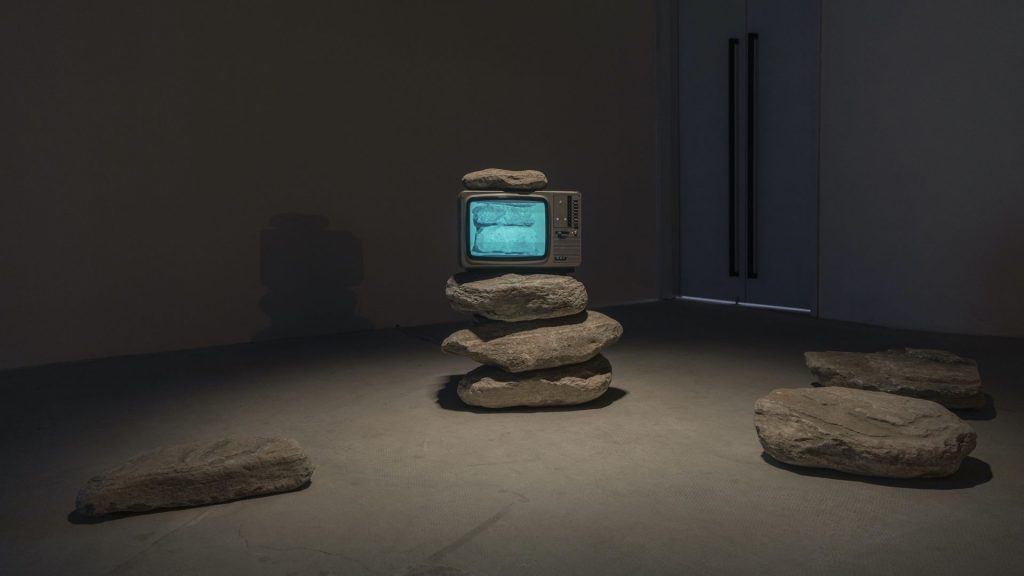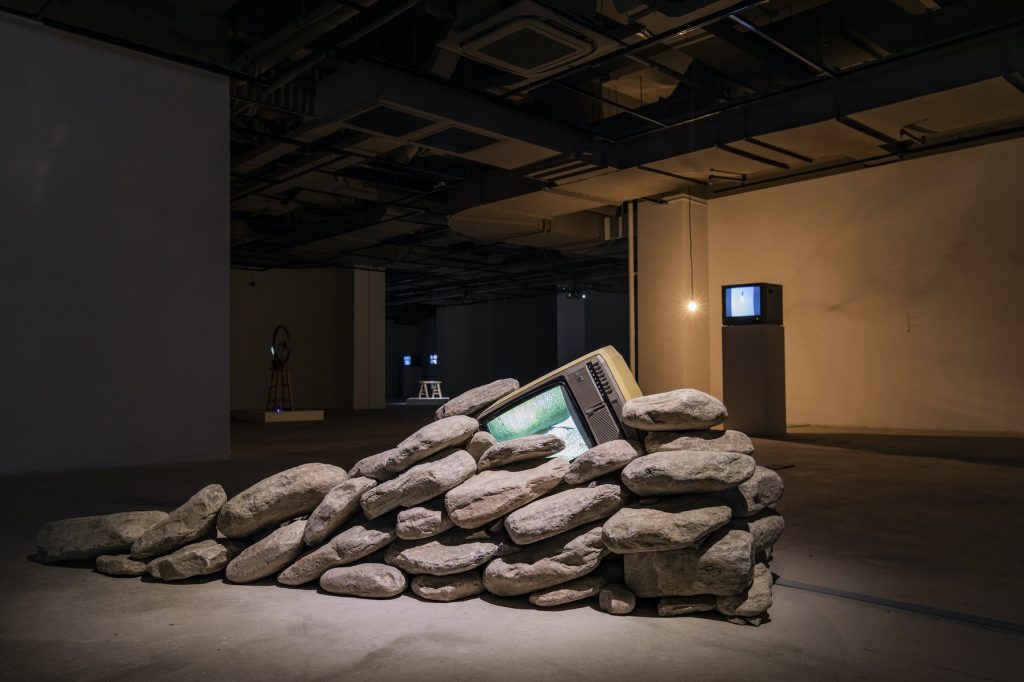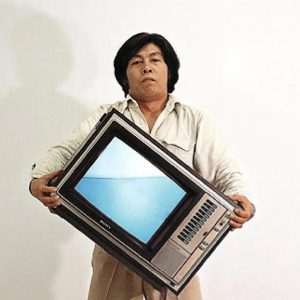Untitled (TV Stone Tower), 1979-1982
single-channel video installation (river stones, 1 TV)

Park Hyunki, Untitled (TV Stone Tower), 1979-1982. Installation view, OCAT Shanghai, 2020.
Image courtesy of OCAT Shanghai.
Untitled (TV & Stone), 1984
single-channel video installation (river stones, 1 TV)

Park Hyunki, Untitled (TV & Stone), 1984. Installation view, OCAT Shanghai, 2020.
Image courtesy of OCAT Shanghai.
These two works by Park Hyunki are representative works from his Untitled series (1976-1979) that utilize monitors showing videos of stones places among actual stones. This juxtaposition of technology and nature is a motif repeatedly in these stone tower works. These works are imbued with Park’s desire to harmonize contrasting elements and to celebrate the beauty of simple phenomena imbued with spiritual almost metaphysical power.
In line with many of his contemporaries in Korean art during the 1970s, Park’s practice emphasized objects and materiality and their philosophical underpinnings. By juxtaposing found objects from nature, Park contrasted reality to fiction and nature to culture. Featuring organic elements, such as stones and water, Park rearranged and modified objects which are not commonly considered to be art. Denying the theatrical and narrative quality of video, Park mainly concentrated on the contemplation of materials and perception.

Park Hyunki
1942-2000, Osaka, Japan
Born in Osaka, Japan in 1942, Park Hyunki is widely known as a precursor to video art in Korea for developing his own artistic vocabulary with the use of then a rare medium. Park’s approach to video and technology resembles the thriving interests of objects and materiality in Korean art of the 70s, which rejected a Western Modernism that concentrated on artistic expression and intervention. By juxtaposing found objects from nature with contemporary technologies, Park contrasted reality to fiction and nature to culture. Featuring organic elements, such as stones and water, Park rearranged and modified objects which are not commonly considered to be art. Denying the theatrical and narrative quality of video, Park mainly concentrated on the contemplation of materials and perception. His persistent and solitary effort to engage in video was indeed a revolutionary one in his time and the contribution he has made to Korean video art is truly immeasurable.

